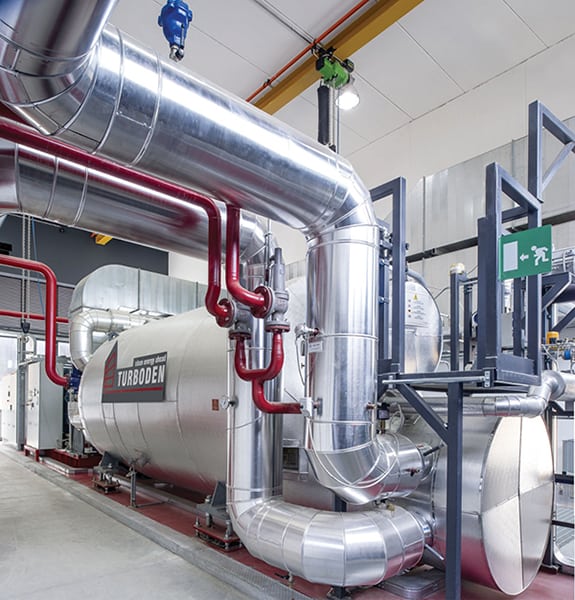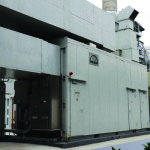One of the world’s largest biomass-fed organic rankine cycle (ORC) plants is getting ready to begin operations. Italian firm Turboden is preparing to put online an 8-MW power unit in Athens, Maine, that will help Maine Woods Pellet Co. power a pellet production facility. The project is expected to start up by March 2016.
According to Mitsubishi Heavy Industries (MHI), which has put 255 similar plants online in 32 countries, ORC is a technology for the combined generation of heat and electric power (CHP) from various renewable sources. Because it offers solutions in the range of 300 kW to 15 MW, it is particularly suitable for distributed generation. It can use a range of biomass fuels, including wood, dried sewage sludge, green cuttings, and other organic waste material.
Turboden, which was in 2009 acquired by UTC Pratt & Whitney Power Systems—a company that was, in turn, acquired by MHI in 2013—says that ORC offers significant advantages over steam turbines. One of the key points in the success of ORC technology is the capability to adapt to load variation easily and quickly. ORC units also show smaller enthalpy drops compared to traditional steam rankine cycle units, they do not need to superheat, and there is no risk of blade erosion. Operation and maintenance costs, too, are lower because ORC units use a non-oxidizing working fluid and are completely automatic.
The Maine ORC system uses wood residues from debarking and chipping activities. The turbogenerator uses the heat carrier—in this case, thermal oil—to preheat and vaporize a suitable organic working fluid in the evaporator. The fluid vapor powers the turbine, which is directly coupled to the electric generator through an elastic coupling. The exhaust vapor flows through the regenerator, where it heats the organic liquid. The vapor is then condensed in the condenser. The organic fluid liquid is finally pumped to the regenerator and then to the evaporator, thus completing the sequence of operations in the closed-loop circuit.
About 245.8 MW of Turboden’s installed base uses wood biomass. The bulk of Turboden’s CHP ORC plants were installed between 2005 and 2010 in Europe, mostly in Germany, followed by Italy, Austria, Latvia, and Spain. However, the company is also exploring the North American market, which it says has huge biomass potential and long experience with thermal oil systems.
In January 2015, two 2 x 13-MW biomass plants began operating commercially at wood products company West Fraser’s Fraser Lake and Chetwynd sawmills in British Columbia (Figure 5). Those projects convey the heat of flue gas from biomass combustion in a closed-loop system to the ORC unit, which converts thermal energy into power. Waste heat is then released into the environment using evaporative cooling towers.
—Sonal Patel, associate editor











